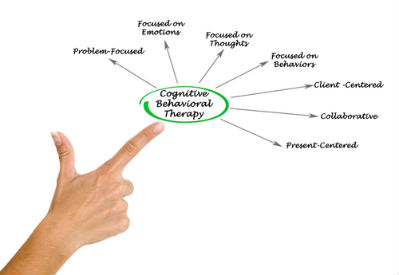Updated 07/15/2024
We know therapy can be beneficial in many ways, but research shows us it’s underutilized. A contributing reason to this is simple: cost. Unfortunately, the financial cost of therapy can be a barrier to mental health services for many people. However, for some, there is a solution.
Sliding scale therapy sets rates based on a client’s ability to pay, making treatment more affordable and accessible.
“Sliding scale therapy offers therapy at an affordable rate, a rate that’s in alignment with a client’s income. So it’s therapy that’s able to help with the same issues that typical therapy would cover, but without exhausting the client’s resources, which could potentially take from other categories of their lives.”
– Talkspace therapist Meaghan Rice, PsyD, LPC
Keep reading to learn more about how therapy on a sliding scale works. We’re looking at who can use the sliding fee structure, how it’s calculated, and what it can help with.
Licensed Therapists Online
Need convenient mental health support? Talkspace will match you with a therapist within days.
How Does Sliding Scale Therapy Work?
Instead of using the same flat, hourly rates for all clients, a sliding scale fee system allows costs to be adjusted based on what a patient can afford. Under this structure, providers change their fees and charge for therapy and counseling on a sliding scale that’s based on a patient’s income. Charging income-based rates means mental health services can be more inclusive and the benefits of therapy are accessible to more people.
Some mental health professionals openly advertise using a sliding scale, while others only offer a reduced fee or rate to patients who request them. Since sliding scale fees are generally determined by income, what a client pays for therapy services can change over time.
Some therapists are open to examining additional variables in addition to income to determine the price of therapy. For example, they might consider family size when setting sliding scale rates.
It’s important to note that a sliding scale isn’t a discount and doesn’t affect a patient’s quality of care. Instead, this flexible fee structure simply considers a client’s ability to pay. Not all therapists and care providers use sliding scales. Even those who don’t, though, might use various other therapy cost reduction methods to make therapy more affordable.
Who can use a sliding scale structure?
While it’s common for therapists and other mental healthcare providers to use a sliding scale system, the structure is used by other healthcare providers and professionals, like dentists and lawyers, too. Although a sliding scale fee structure isn’t a requirement, the American Psychological Association (APA) recommends that mental health providers treat some patients at reduced rates.
Charging patients on a sliding scale means more people will have access to care — yet still, not all therapists offer this option. Therapists who accept insurance typically sign contracts that may prevent them from reducing their rates.
Providers unable to use a sliding scale rate structure might choose alternatives to make therapy more affordable. This might include offering a limited number of free sessions to low-income clients, or accepting payment plans. Therapists may also charge reduced fees to clients who receive therapy without insurance and pay out of pocket.
How are sliding scale therapy fees calculated?
Sliding scale fees are typically based on a client’s income, but they can be calculated differently in some cases. For example, many providers base their rates on the United States Federal Poverty Level guidelines, which are updated yearly. These guidelines use income and family size to determine eligibility for services.
Some providers use a formula to calculate fees, like [0.002] x [Annual Income]. It’s common to set rates based on income ranges. This could look something like clients earning between $20,000 to $44,999 or year are charged a reduced rate per therapy session, while those in a higher income bracket should expect to pay more.
Many care providers who offer sliding scale services set a minimum price — this is the lowest amount they’ll accept for a therapy session. While some inclusive therapists offer sliding scale services to all clients, others may only offer a limited number of sliding scale spots. Some therapists ask clients to provide proof of income, but not all do. Many don’t require clients to provide any evidence at all.
What Sliding Scale Therapy Can Help With
Sliding scale therapy provides people who need therapy with a variety of advantages.
Sliding scales remove cost barriers to therapy
Studies show that people in poverty are disproportionately affected by mental health conditions. There are several identified reasons for this. First, poverty is a significant source of stress. Also, according to research, people in low-income communities are more likely to be exposed to trauma, increasing their risk of mental health conditions.
Ultimately, these and other factors put people below the poverty level at higher risk for mental health conditions. As a result, they’re more likely to develop depression, anxiety, and post-traumatic stress disorder (PTSD), among other conditions. All these mental health challenges, however, can be effectively treated with appropriate mental health coverage and care plan that includes different types of therapy and possibly medication.
Sliding scale therapy ensures that people in need have access to critical mental health services. Charging for therapy and counseling services on a sliding scale removes the cost barrier that prevents many people from seeking help. It makes sense that people who can afford therapy are more likely to get the professional help they need.
Sliding scales help to reduce financial stress
Using a sliding fee scale can also lead to better outcomes and reduced stress. People who struggle to afford therapy might have to sacrifice other needs to pay for mental health care. When treatment is more affordable, though, they can focus on their mental health, rather than stress over the therapy cost and the impact it has on their budget.
You may wonder, does insurance cover therapy? The answer is, it depends, and not everyone has insurance. Since not everyone has insurance, sliding scale fee structures can make things easier for those who have to pay for therapy out-of-pocket, as opposed to using an HSA for therapy, for instance. It can also benefit people with limited insurance coverage. Even someone with insurance might struggle to cover the cost of treatment. According to a National Alliance on Mental Illness report, many people find it difficult to find mental health care providers who are in-network. Sliding fees can make it easier to get help from out-of-network therapists.
Start Affordable Therapy Today with Talkspace
The cost of therapy is one of the most significant barriers to mental health care access. Not only do financial concerns keep people from accessing treatment, but many stop therapy because they can no longer afford it. Secondary costs, like transportation and childcare, can make it even more difficult for some people to obtain adequate mental health care.
Online therapy can be drastically cheaper than in-person therapy. It allows you to get help in the comfort of your own home during a time and space that’s comfortable and convenient. At Talkspace, you can receive the benefits of online therapy and get high-quality care from a licensed therapist at an affordable price. If you want to start therapy but have concerns about costs, reach out to Talkspace today to learn more.
Sources:
- Hunsley J, Elliott K, Therrien Z. The efficacy and effectiveness of psychological treatments for mood, anxiety, and related disorders. Canadian Psychology / Psychologie canadienne. 2014;55(3):161-176. doi:10.1037/a0036933. https://psycnet.apa.org/record/2014-21921-001. Accessed November 15, 2022.
- Ethical principles of psychologists and code of conduct. American Psychological Association. https://www.apa.org/ethics/code. Accessed November 15, 2022. https://www.apa.org/ethics/code. Accessed November 15, 2022.
- Federal Poverty Level (FPL) – glossary. Federal Poverty Level (FPL) – Glossary | HealthCare.gov. https://www.healthcare.gov/glossary/federal-poverty-level-fpl/. Accessed November 15, 2022.
- Fusco RA, Yuan Y, Lee H, Newhill CE. Trauma, sleep and mental health problems in low-income young adults. International Journal of Environmental Research and Public Health. 2021;18(3):1145. doi:10.3390/ijerph18031145. https://pubmed.ncbi.nlm.nih.gov/33303583/. Accessed November 15, 2022.
- The Doctor is Out. NAMI. https://www.nami.org/support-education/publications-reports/public-policy-reports/the-doctor-is-out. Accessed November 15, 2022. https://www.ncbi.nlm.nih.gov/pmc/articles/PMC7908203/.
Talkspace articles are written by experienced mental health-wellness contributors; they are grounded in scientific research and evidence-based practices. Articles are extensively reviewed by our team of clinical experts (therapists and psychiatrists of various specialties) to ensure content is accurate and on par with current industry standards.
Our goal at Talkspace is to provide the most up-to-date, valuable, and objective information on mental health-related topics in order to help readers make informed decisions.
Articles contain trusted third-party sources that are either directly linked to in the text or listed at the bottom to take readers directly to the source.




